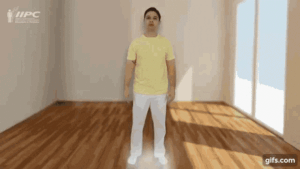What is Projectiology?
Briefly, Projectiology is the science that studies the phenomenon of the exit of consciousness (ego, self, soul) outside the physical body, the Projection of Consciousness.
Projectiology encompasses all stages of the phenomenon, from pre-projective perceptions, the take-off of the psychosoma (emotional body), the extra-physical environment (dimensions beyond physical matter), to the return (coincidence of the vehicles of manifestation of consciousness) and the post-projective sensations.
All of this is seen from a scientific perspective, of experiments, proofs and refutations.
Today, called projection of consciousness or out-of-the-body experience (OBE), by scientists and researchers, the phenomenon has come to be studied in a scientific way, providing the self-perception that it is natural and physiological, and that it occurs with all people regardless of their set of values, creed, race, sex, age, social class and cultural level, classifying it as a universal phenomenon.
The science of Projectiology was proposed in 1981, following the publication of the book Projections of the Consciousness, written by doctor and researcher Waldo Vieira, a conscious projector since he was 9 years old. In 1986, Waldo Vieira published the treatise Projectiology – Panorama of the Experiences of Consciousness Outside the Human Body, today (2010), in its 4th edition, with 1232 pages and 2040 bibliographical references, being considered an international reference on the study of conscious projection.
International research indicates that conscious projection is achieved and experienced by millions of people across the planet. We all leave our bodies, usually when we sleep. However, for most humanity, there is a lack of lucidity during the out-of-body experience and recollection of the projective phenomenon experienced. For this reason, many think that projection does not exist. And because they don’t have a clear memory of it, they confuse it with dreams.
Manifestation Vehicles
Consciousness uses various bodies or vehicles to manifest itself. The human body or soma is the densest vehicle, perceived by the physical senses, when we are awake, during wakefulness, a moment in which all the vehicles of manifestation are in coincidence, fitted together.
During sleep or through physical relaxation, for example, these bodies disengage or become inconsistent, allowing consciousness to project itself outside the physical body and act from another body, more subtle or less dense, the emotional body. or psychosoma. The physical body remains asleep, inanimate, empty of consciousness, being maintained only by autonomous biological functions.
Meanwhile, the seat of our consciousness, which is found in the psychosoma, can act freely in other dimensions. There is also manifestation through the mental body or mentalsoma, signaling a greater level of lucidity and rationality and less emotionality. The manifestation of consciousness is also bioenergetic, when it uses the energy body or energosome, responsible for health and vitality. The set of all these bodies (soma, psychosoma, mentalsoma and energosoma) we call holosoma.
During a conscious projection, it is common for a person to feel like they are floating above their physical body. Other times, she is able to see her own body asleep in bed. The projector may also feel pleasant vibrations throughout the body, sounds or noises inside the head, sensation of free fall, temporary inability to move the physical body, sensation of swelling or inflating like a balloon and several other signs correlated to the projective phenomenon.
Differences between dream and projection
In dreams, as well as in daydreams, imaginations, hallucinations, mental imbalances or psychophysiological disorders, we have no control over our actions. However, in conscious projection, we act by our own will and determination. There is several studies highlighting the differences between projection and these altered states of consciousness.
Types of Consciousness Projections
Our projections almost always occur involuntarily or spontaneously, during natural sleep or even during a simple nap. In other cases, conscious projection occurs in critical situations, such as Near-Death Experiences (NDEs), a type of forced, compulsory or pathological projection, caused by organic traumas, physical accidents and common to terminal patients or survivors of clinical death.
Projectiology proposes projective techniques so that the interested party obtains voluntary, healthy and planned conscious projections. This type of projection offers greater levels of lucidity and remembrance, helps the individual to develop emotional self-control, to lose the fear of death, to rethink their values, to boost self-knowledge and to understand their real origin.



